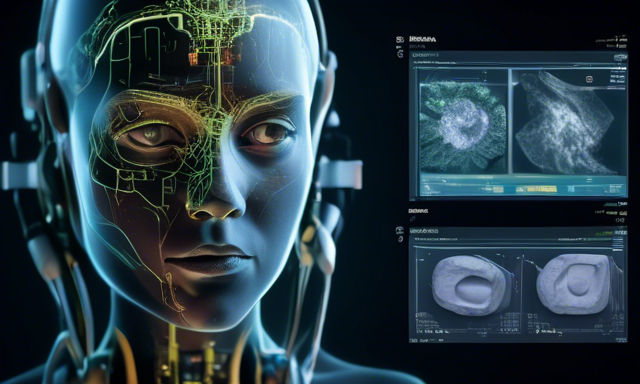Revolutionizing CT Scan Analysis with NVIDIA’s VISTA-3D NIM Microservice 🌟
Every year, more than 300 million computed tomography (CT) scans are performed globally, with a staggering 85 million in the United States alone. Radiologists are constantly searching for ways to enhance their workflow efficiency and deliver accurate reports promptly. To cater to this demand, NVIDIA Research has created a groundbreaking foundation model known as VISTA-3D, integrated into the advanced microservice NVIDIA NIM, designed for seamless and scalable deployment.
The Cutting-Edge VISTA-3D Model
The VISTA-3D (Versatile Imaging Segmentation and Annotation) model has been meticulously trained on a vast dataset of over 12,000 volumes, encompassing 127 different human anatomical structures along with various lesions such as lung nodules, liver tumors, and bone lesions. Here are the core features of the VISTA-3D model:
- Segment everything: Enables comprehensive exploration of the body, facilitating a deeper understanding of complex diseases that may affect multiple organs.
- Segment using class: Offers detailed views based on specific classes, crucial for precise disease analysis.
- Segment point prompts: Enhances segmentation accuracy through user-guided selection, expediting the creation of precise ground-truth data.
The architecture of the VISTA-3D model comprises an encoder layer followed by two parallel decoder layers, each serving distinct purposes – one for automatic segmentation and another for point prompts. This unique structure ensures exceptional accuracy and adaptability across a wide array of anatomical regions.
The Power of VISTA-3D NIM Microservice
Through the NVIDIA API Catalog, users can access the VISTA-3D NIM microservice, allowing them to explore its capabilities using sample data. This microservice can effectively segment over 100 organs or specific classes of interest, presenting views in axial, coronal, or sagittal planes.
Utilizing NIM Microservices
By obtaining a personal key from NVIDIA, users can deploy VISTA-3D on their own data, receiving 1,000 complimentary credits to experiment with various NIM microservices. Detailed guidelines for generating an API key and executing the model, along with sample code in multiple programming languages, are readily available.
To employ VISTA-3D on personalized data, setting up an FTP server for hosting medical images is essential due to the large file sizes that are typically impractical to send directly via API payloads.
Implementing NIM Microservices Locally
To run NIM microservices on local systems, interested users can apply for NVIDIA NIM access, granting them a Docker container for deploying the VISTA-3D NIM microservice on their preferred hardware. Basic requirements include Docker, Docker Compose, and NVIDIA drivers installed on the designated machine.
A sample Docker Compose file is provided to facilitate a quick start, accompanied by instructions for configuring an NGINX server to serve images seamlessly.
Concluding Thoughts
NVIDIA’s revolutionary VISTA-3D foundation model marks a significant leap forward in the realm of medical imaging, offering precise segmentation of over 100 organs and diverse diseases within CT scans. The NVIDIA NIM microservice streamlines the deployment and utilization of this cutting-edge model, heightening the efficiency and accuracy of radiologists’ workflow.
If you’re intrigued by the potential of NVIDIA’s VISTA-3D NIM microservice, you can apply for access to leverage its capabilities on your hardware, revolutionizing your medical imaging processes.
Hot Take: Embrace the Future of Medical Imaging with NVIDIA’s VISTA-3D NIM Microservice 🚀
Experience a paradigm shift in CT scan analysis with NVIDIA’s VISTA-3D NIM microservice, offering unparalleled precision and efficiency in organ and disease segmentation. Elevate your radiology practice to new heights by incorporating this cutting-edge technology into your workflow, unlocking a realm of possibilities in the field of medical imaging. Seize this opportunity to revolutionize the way you analyze and interpret CT scans, embracing the transformative power of NVIDIA’s VISTA-3D NIM microservice.





 By
By

 By
By
 By
By

 By
By